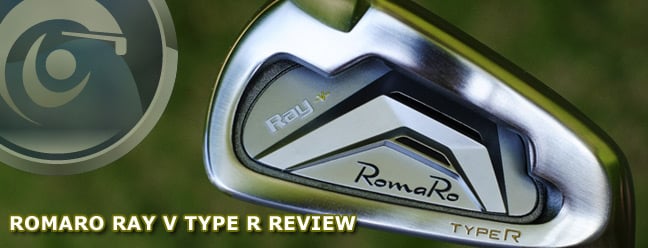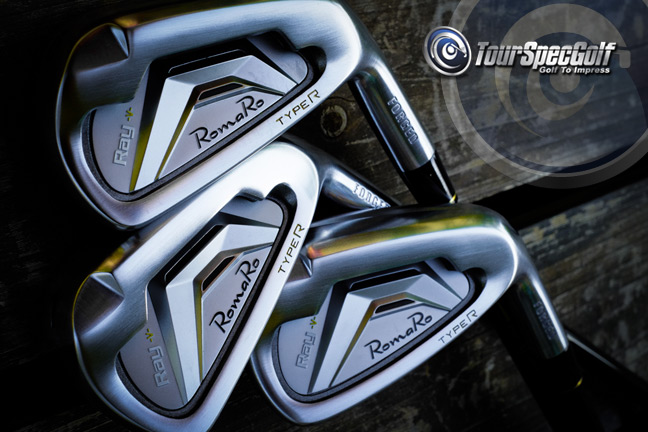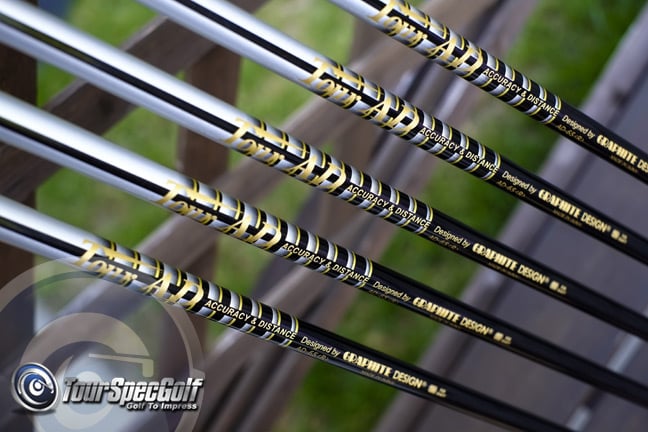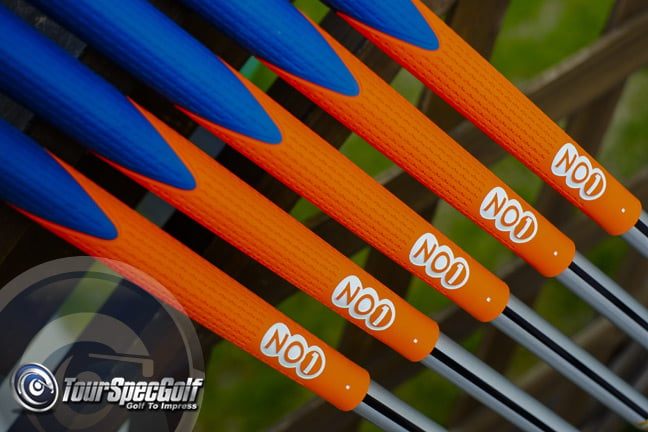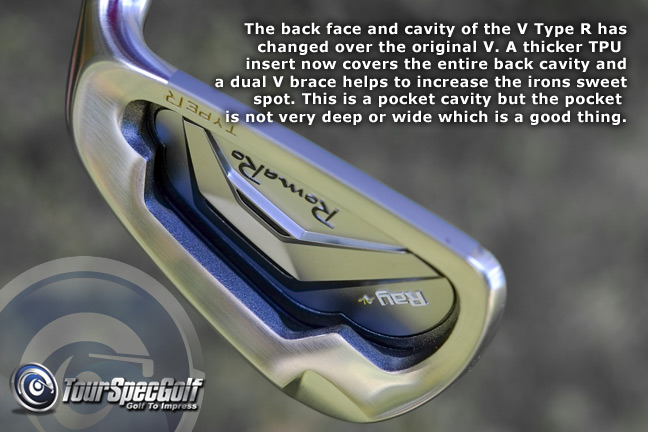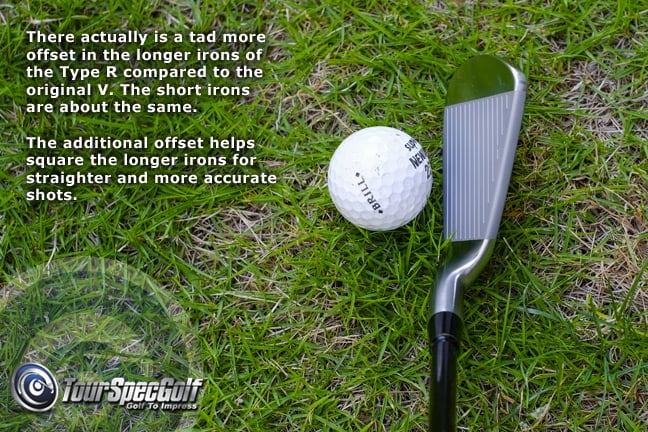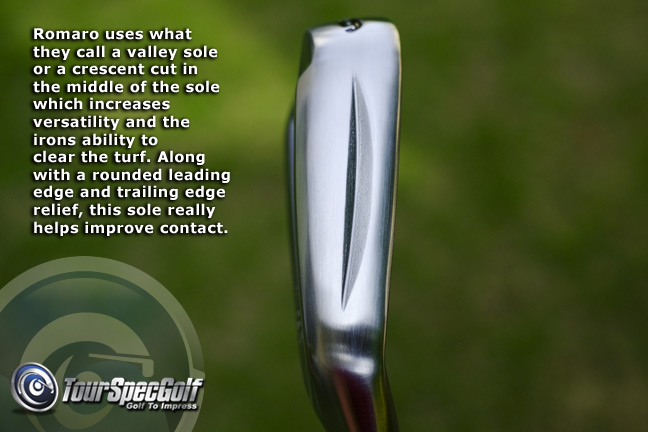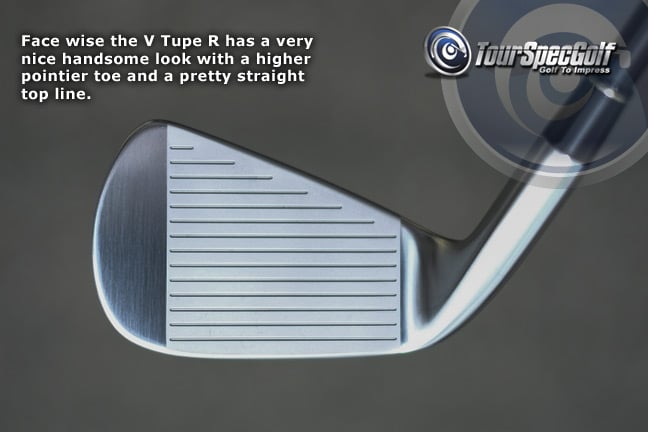When it comes to choosing a a forged iron with all around performance, there are so many models to choose from. Brands in Japan all have at least one model that targets a wide range of golfers with premium forged feel plus ease of use. These type of irons appeal to not only improving golfers but even better golfers looking for some extra forgiveness. Average golfers eye these models as their chance to play a nice forged cavity back that can bring their game to the next level. Year in and year out models like the ONOFF Forged, Titleist VG3 Forged, Yamaha V Forged, XXIO Forged have really done well in that overlapping target range.
As an average and improving golfer who appreciates not only quality forged irons but also design and the technology put into clubs today, I am always on the search every season for those forged irons that do everything well. Too many times these days do I have golfers email me and tell me they have an 18 handicap and are wanting a set of blades. Golf is not an easy game, choosing the right clubs to fit each player can help a player improve and make the game much more enjoyable. Choosing a club that is beyond the level of a golfer can make the game down right frustrating. As much as I would love to play a sexy set of blades and I understand the concept of a “challenge”, I also have to face the fact that I need as much forgiveness and distance I can get as a slower swinger and improving golfer. Many get enamored by the pure feel and design of a muscle back and its promises of great control and workability. These promises are true as long as you can strike the iron well. Many cavity backs today can also provide premium forged feel but with features that help mere mortals make great shots.
I’ve gone through all the usual suspects before, gaming the ONOFF Forged and Titleist VG3 as well as the Yamaha V Forged (2011 model) for extended periods of time. These 3 irons may very well be the benchmark of an average sized forged cavity back that appeals to both sides of the skills spectrum. I decided this year it was time to buck the trend and try something not so mainstream. Golf enthusiast boutique brand Romaro Sports has been growing as an increasingly popular brand here at TSG and is in fact one of the leading component brands in Japan. We have long felt their products are under appreciated and very underrated. Back in February we visited Romaro at the Japan Golf Fair where they showcased their new Type R lineup. The Type R currently includes Fairway Woods, a Utility and a set of forged irons (Type R drivers are also slated for later this summer!). Romaro has always been know as a brand with a focus on the athlete and better golfer so with the introduction of this Type R line, came a new appeal to those who wanted more forgiving clubs with an emphasis on easy launch and big distance. The woods now featured new forged variable cup Ti face and a deeper and lower CG thanks to the use of the HX weight. This helps get the ball in the air and produce a higher but stronger trajectory than the previous Ray FW and UT. What really stood out to me though was the new Ray V Forged Type R iron. I loved they way it looked and the improvements Romaro had made so I waited for months before deciding on this years irons in my bag so I could get my hands on the Type R.
I decided that the new V Forged Type R would be my forgiving forged cavity back for this season based on the following criteria.
1. A soft forged iron
2. Mid sized or smaller
3. A good amount of technology
4. Bordering on automatic (ie easy to use and great distance… just point and shoot)
5. Could be built the way I wanted them
Romaro being a components company, offers its clubs as heads only which allows in turn for them to be built to each customers specs with shafts and grips of their choice. While most manufacturers and brands today do offer custom options there are always limitations to what shafts and grips can be used and how much they will bend lie or loft. I knew that if this set was to be my gamers for the year they would need to be built exactly the way I wanted them. My first choice for a shaft was actually the new Fujikura MCI 60, which is Fujikura’s new Metal Composite shaft, a graphite shaft with an inner tip section enforced with a layer of steel. This cross breed shaft meshes the feel and forgiveness of a graphite shaft with the control and stability of steel. But alas, the MCI was still so hot and I was told I would have to wait a month. Like most customers…. I hate waiting! (^_^)
So I went ahead and choose a proven performer in the Graphite Design Tour AD AD-65 iron shaft. The Tour AD iron shafts have been around many years and for good reason, they simply perform all around. Graphite Design has never seemed to see the need to upgrade them or replace them as they are still the most popular upgrade choice for irons here in Japan . While the AF-75 is the most popular model an around 78g. I wanted to go a tad lighter with a focus on distance so the AD65 at around 65-66g was the best choice. Another reason I wanted the AD-65 was also because the butt diameter of the AD-65 is smaller than most shafts. I have tiny hands (Cadet Small) and when the butt of a shaft is too thick I feel I have trouble turning over the club and I tend to squeeze harder with the “fatter” butt. With this in mind I chose the AD-65 which actually has a 0.585″ butt vs 0.600 (or more) on most other shafts. I was also very happy that Graphite Design had now made the EV color scheme (black and gold) a standard color (in the past if you wanted colors like EV or DI or BB for the iron shafts you had to wait 3 weeks – and you still do for DI and BB but not EV!). The gold rings of the Tour AD actually match the Gold paint fill for the Type R and V on the iron.
For the grips, I mostly use grips like Iomic, Elite, Nowon and Muziik but I wanted to try something new so I opted for the very popular and very new Nowon Ichi Limited grips. They had just announced a light model at 43g which would be perfect for helping me achieve swing weight (more on this later). While previous Nowon models like the No.1 50 48 and 43 were very tacky and very soft, that very soft feel came at the expensive of durability and higher torque. I found they wore down a bit too quickly and twisted in my hands more than I would have liked. The Ichi are perfect, still sticky and tacky but more firm and pretty bright fashion statements, especially the blue and orange ones I got.
I called up Romaro and told them I was putting together a set of Type R’s and requested heavier heads since I would be using light weight graphite as opposed steel (they spec their heads for 950GH which is around 95-98g). The drop in shaft weight of the 30+ grams would result in a drop of approximately 3 swing weight points (luckly the Tour AD balance is towards the tip or else the drop would be bigger). Romaro’s variance in weight is not large which is in fact a good thing as a the sign of a well made forged head is the LACK of variance. Consistent weights is a good thing and as we always do I weighted each head on arrival to note a 7g spread between each iron (except for the PW which was 8g up) 257 264 271 278 285 293 grams respectively for 5-PW. This is not considered that heavy so the lighter grips would help me gain back a couple of points plus the increase in length from 37.75″ to 38.00″ would get me that additional 1.5 points. Romaro does include ferrules as well with their heads so once I had all the parts it was a matter of weighing everything, dry fitting for swing weight, and then assembling. Like most JDM brands, the Tour AD’s have their spines marked so installation with the proper orientation is a breeze. Getting parts to achieve the right swing weight is essential as I don’t like adding tip weights or tungsten down the hosels… Based on a 5 iron length of 38.00″ I was able to get the following swing weights which are tad on the lower side but acceptable 5i D0, 6i D0.2, 7i D0.4, 8i D0.7, 9i D1.0, PW D1.4. CPM came out as follows: 5i 298. 6i 306, 7i 314, 8i 321, 9i 328, PW 336 .
Now that I had built my new set of Romaro Ray V Type R irons, I could actually get out there and test them and compare them to the previous model. Overall, Romaro sharpened up the overall look of the V Type R. Slightly sharper lines with a slightly lower cavity and a dual V brace in the back face to help increase the sweet spot. The new Type R features a TPU (Thermoplastic Polyurethane) insert that now covers a much larger area of the back face. This insert is meant to improve feel by dampening vibrations. Honestly I am usually not a big fan of overdone vibration control as I think it takes away too much feel and feedback. However this is not the case with the Type R. You can still feel the ball compress on the face and you have a pretty good idea where you hit it on the face. The feel of the Type R is very good, soft but not mushy and the pocket cavity is not clickly like some pocket cavities can be at at impact. With its S20C material I put its feel very close to the ONOFF Forged which does NOT have pocket cavity and does not use any sort of vibration dampening.
The Type R’s set up well at address. Romaro has very so slightly increased the offset in the 4 5 6 irons to help the face of those longer irons at impact. The mid and short irons have the same offset as the previous model which is neither alot nor too little offset. The Type R is considered slightly smaller than mid sized. Its blade length is a bit longer but top line thickness very reasonable. The sand blasted face and stain finish contrast and frame the ball well. I should have also noted that I did adjust the lie angles 1.5* flat.
The sole of the Type R really shines and helps the iron excel when it comes to versatility. Relief in the form of a rounded/blunted leading edge as well as trailing edge relief , more bounce and a crescent cut in the middle of the sole all contribute to forgiveness, helping the iron dig less but get under the ball more cleanly for a more pure impact. The Type R also features Romaro’s signature cut away toe which not only looks interesting but creates the illusion of a thinner toe area and removes some of the weight from the toe to be placed elsewhere. This weight reduction in the toe helps the iron rotate square at impact. The courses here in Japan are very lush, very soft, so an iron like the Type R does very well. Its interaction with the turf was superb, in fact better than the VG3 and ONOFF Forged. My bad shot us hitting the ball fat and I had no issues making clean contact during my 18 hole test round.
I’ve played the Ray V Type R now for over 3 weeks and I am very happy with their all around performance. They look great, are very forgiving and easy to use, pure feel with good feedback and best of all have pretty good distance and are very straight. While the cavity is lower, the V brace in the back face as well as the increased TPU vibration size help keep the CG centered in the iron for a stable and strong trajectory. You can go right at the pin with these irons without worrying about ballooning and lack of stability. The iron shafts and grips are a great match and I’m very pleased with the overall package. The new Ray V Type R are right up there along with the ONOFF Forged, Titleist VG3 as appealing do it all type of premium forged irons. Another iron I had considered is the brand new Miura Giken CB-2007 but was concerned about its thinner sole and its slightly more intimidating appearance due to less offset and a thinner top line. The pocket cavity of the Type R increases forgiveness and distance over the Miura which are key factors for me. The distance of the Romaro are longer than the ONOFF and rival the VG3 which have stronger lofts. While they border on mid sized, they are in no way bulky and are very appealing visually.
For the average golfer or improving player wanting an iron that takes their game to the next level, the Type R is a great choice among many top contenders. While no club can overcome swing flaws and mistakes, the Type R is good at minimizing bad shots thanks an increased MOI design. For the better player who wants more forgiveness and ease of use in an iron that still appeals to them visually, and provides the pure feel of a one piece cavity back, the Type R are also a great choice, with its thinner sole and straighter top line. Best of all they can be made for each customer with their choice of shaft and grip to their specs. You can always order the irons as head only or have TSG build them for you. My search for a forged top performance iron is over thanks to the Ray V Type R, at least for this season. Its firmly in the bag along with the new Ryoma Maxima, an S-Yard XV Fairway wood and S-Yard Bold wedges. I have a gut feeling the new Type R utilities may be joining them soon!


